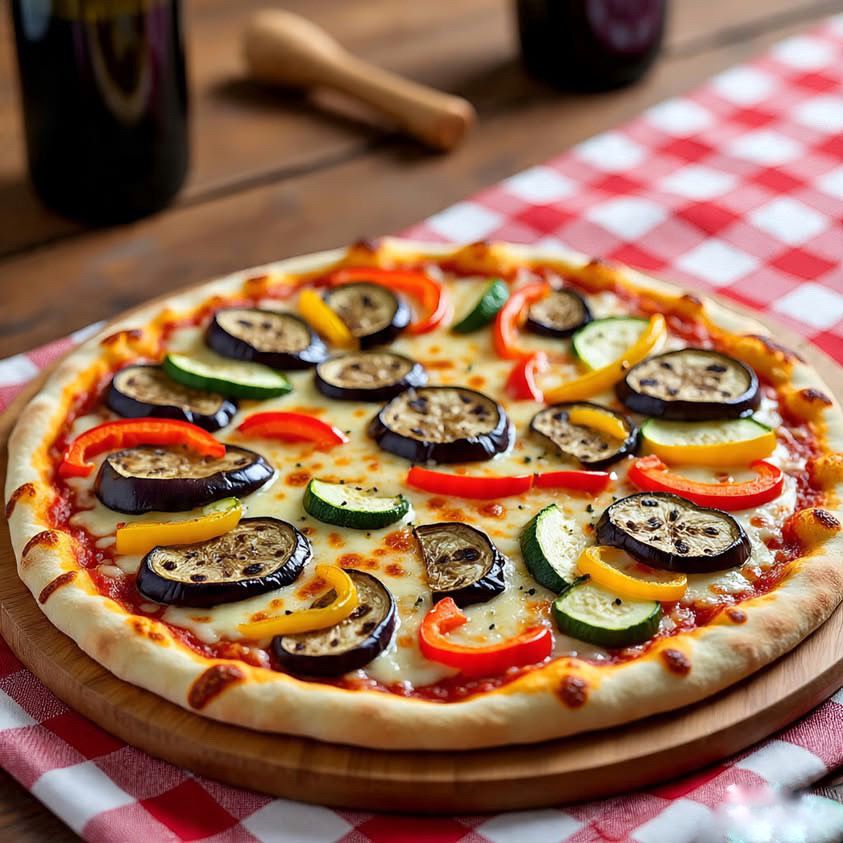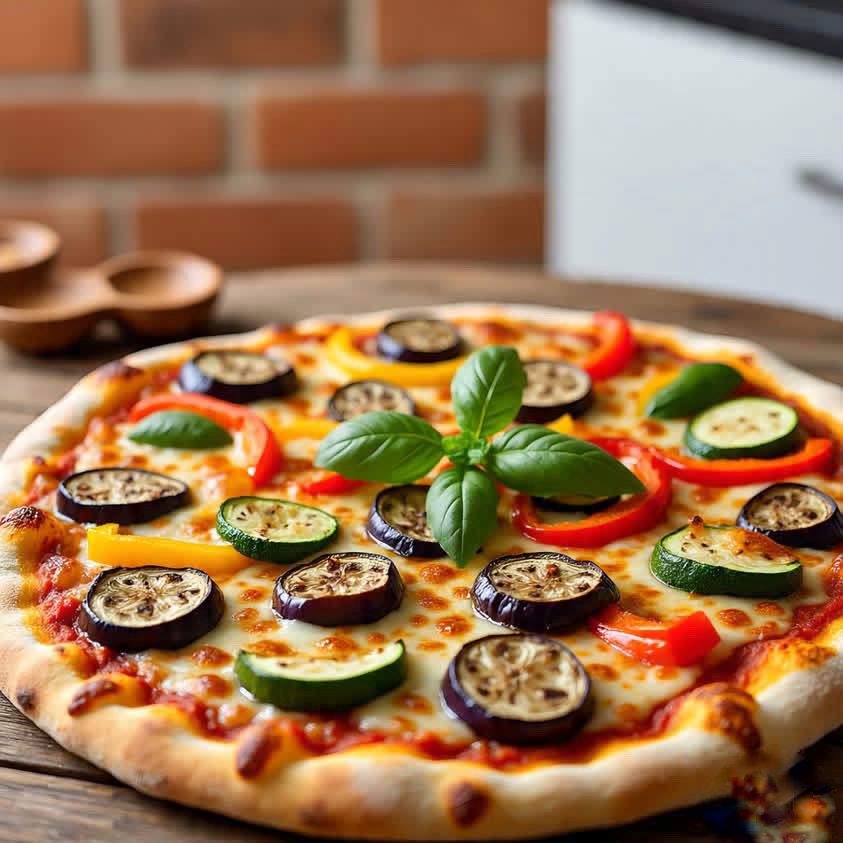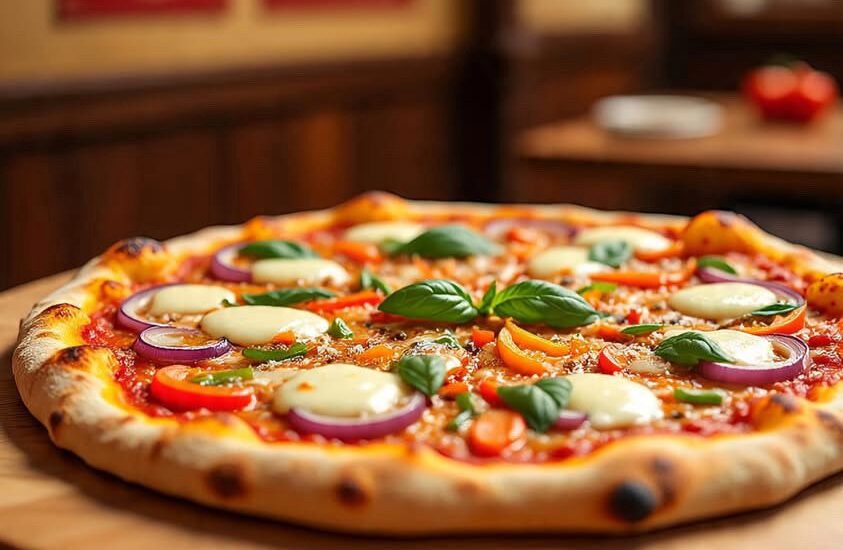When I first heard someone mention putting ratatouille on pizza, I will admit I was skeptical. I mean, we are talking about taking that beautiful French vegetable stew and somehow making it work as a pizza topping? It sounded like one of those fusion experiments that restaurants try when they are desperate to stand out on social media. Boy, was I wrong. Get tips for making this French inspired creation at home.
My journey with ratatouille pizza started about two years ago when I was visiting a small bistro in Portland. The menu had this intriguing item called “Ratatouille Pizza with Goat Cheese and Balsamic Reduction” and honestly, I ordered it more out of curiosity than actual hunger. The server brought out this gorgeous pie that looked nothing like the greasy pepperoni disasters I usually demolish on Friday nights.
The first bite completely changed how I think about pizza toppings. The ratatouille brought this incredible depth of flavor that you just cannot get from your typical pizza vegetables. Instead of sad, soggy bell peppers and mushrooms scattered randomly across the dough, this was a harmonious blend of zucchini, eggplant, tomatoes, and herbs that had been slowly cooked until each vegetable maintained its distinct character while melding into something greater.
What really makes ratatouille work as a pizza topping is the way the vegetables hold up during baking. Unlike fresh vegetables that release too much moisture and make your crust soggy, properly prepared ratatouille has already surrendered most of its water content during the initial cooking process. This means when it hits that hot pizza stone, it concentrates and caramelizes rather than steaming your perfectly crafted dough into a limp mess.

The goat cheese component deserves its own paragraph because it transforms this whole dish from good to absolutely transcendent. Where mozzarella might compete with the complex flavors of the ratatouille, goat cheese actually enhances them. Its tangy, creamy profile creates this beautiful contrast against the earthy vegetables while adding richness without overwhelming the palate. I have tried this pizza with various cheeses since that first encounter, and nothing comes close to the magic that goat cheese brings to the table.
Now let me talk about that balsamic reduction for a moment. When done correctly, balsamic reduction on pizza is like adding the perfect punctuation to a well-written sentence. It provides these little bursts of sweet and tangy intensity that brighten up each bite. The key is applying it after the pizza comes out of the oven, not before, because heat can make the reduction bitter and lose that glossy, syrupy consistency that makes your mouth water.
Making ratatouille pizza at home has become one of my favorite weekend projects. The ratatouille itself can be prepared ahead of time, which actually makes it better because the flavors have time to develop and marry together. I usually make a big batch on Sunday and use it throughout the week for various meals, with pizza being the crown jewel of applications.
The technique I have developed involves spreading a thin layer of olive oil on my pizza dough instead of traditional tomato sauce. Then I distribute the room-temperature ratatouille evenly, making sure not to overload any single area. The goat cheese gets crumbled on top, and into a very hot oven it goes. The high heat creates these beautiful charred edges on the vegetables while keeping the interior tender and flavorful.

One thing that surprised me about this pizza is how well it works for entertaining. When friends come over expecting regular pizza night, this ratatouille creation always generates interesting conversations. People who claim they do not like vegetables suddenly find themselves asking for the recipe. There is something about the familiar format of pizza that makes people more adventurous with flavors they might otherwise avoid.
The seasonal aspect of ratatouille pizza cannot be ignored either. Summer brings the absolute best vegetables for this dish, when zucchini and eggplant are at their peak and tomatoes actually taste like tomatoes. Making this pizza in July with farmers market vegetables versus February with grocery store produce creates two completely different experiences.
What I love most about ratatouille pizza with balsamic reduction and goat cheese is how it challenges preconceptions about what pizza can be. It proves that pizza does not need to be fast food or guilty pleasure eating. It can be sophisticated, seasonal, and satisfying in ways that go beyond just filling your stomach. This combination has earned a permanent spot in my cooking rotation, and I suspect it will do the same for anyone willing to give it a chance.
Reference
University of Illinois Extension. (2018, September 28). Ratatouille, the food not the movie. Simply Nutritious, Quick and Delicious. https://extension.illinois.edu/blogs/simply-nutritious-quick-and-delicious/2018-09-28-ratatouille-food-not-movie
Australian Government Department of Health. (n.d.). Ratatouille. Eat For Health. Retrieved September 17, 2025, from https://www.eatforhealth.gov.au/eating-well/healthy-recipes/ratatouille
Rai, S., Rathaur, P., Kumar, S., & Daga, M. K. (2023). Exploring the health benefits and functional properties of goat milk proteins. Food Chemistry. https://doi.org/10.1016/j.foodchem.2023.132593

